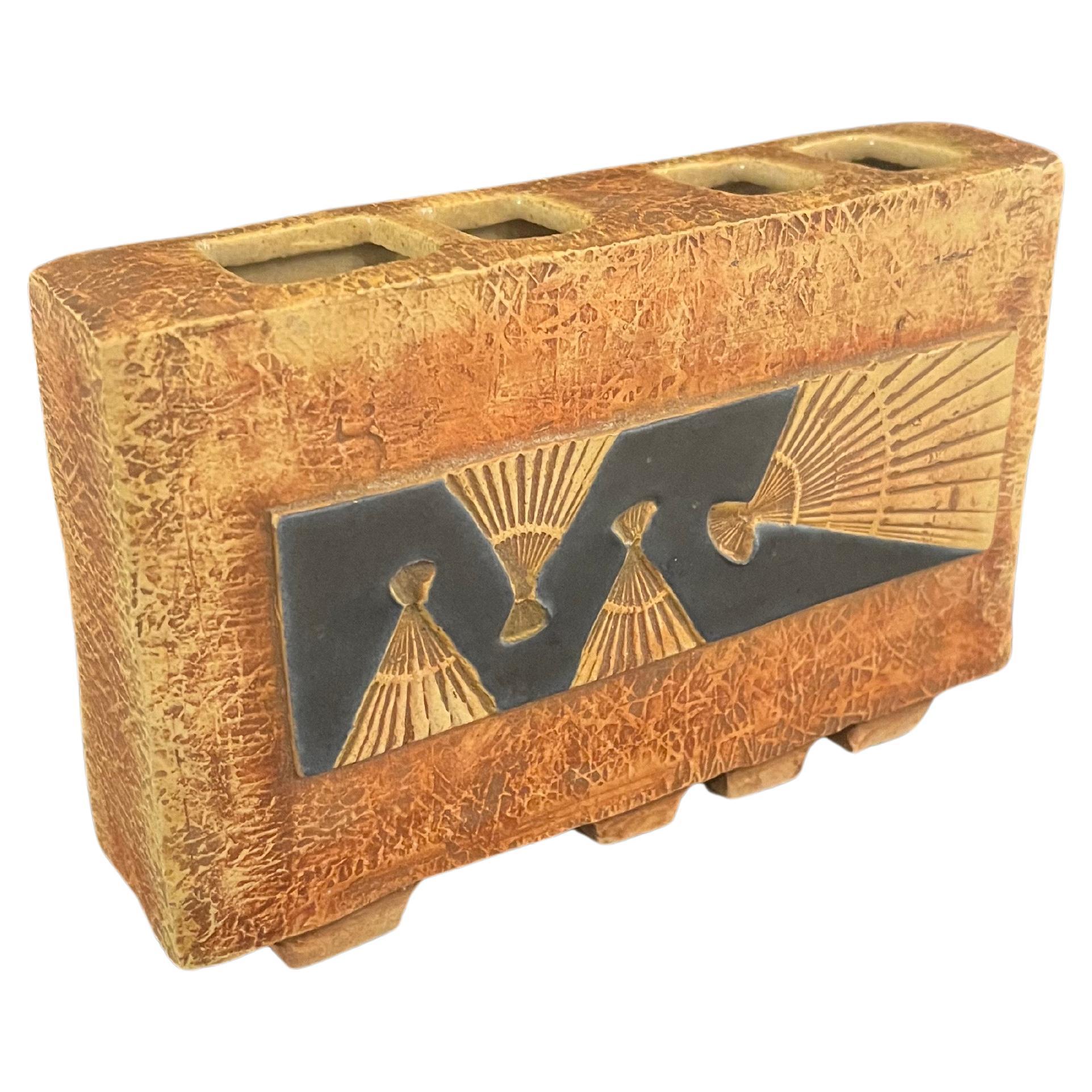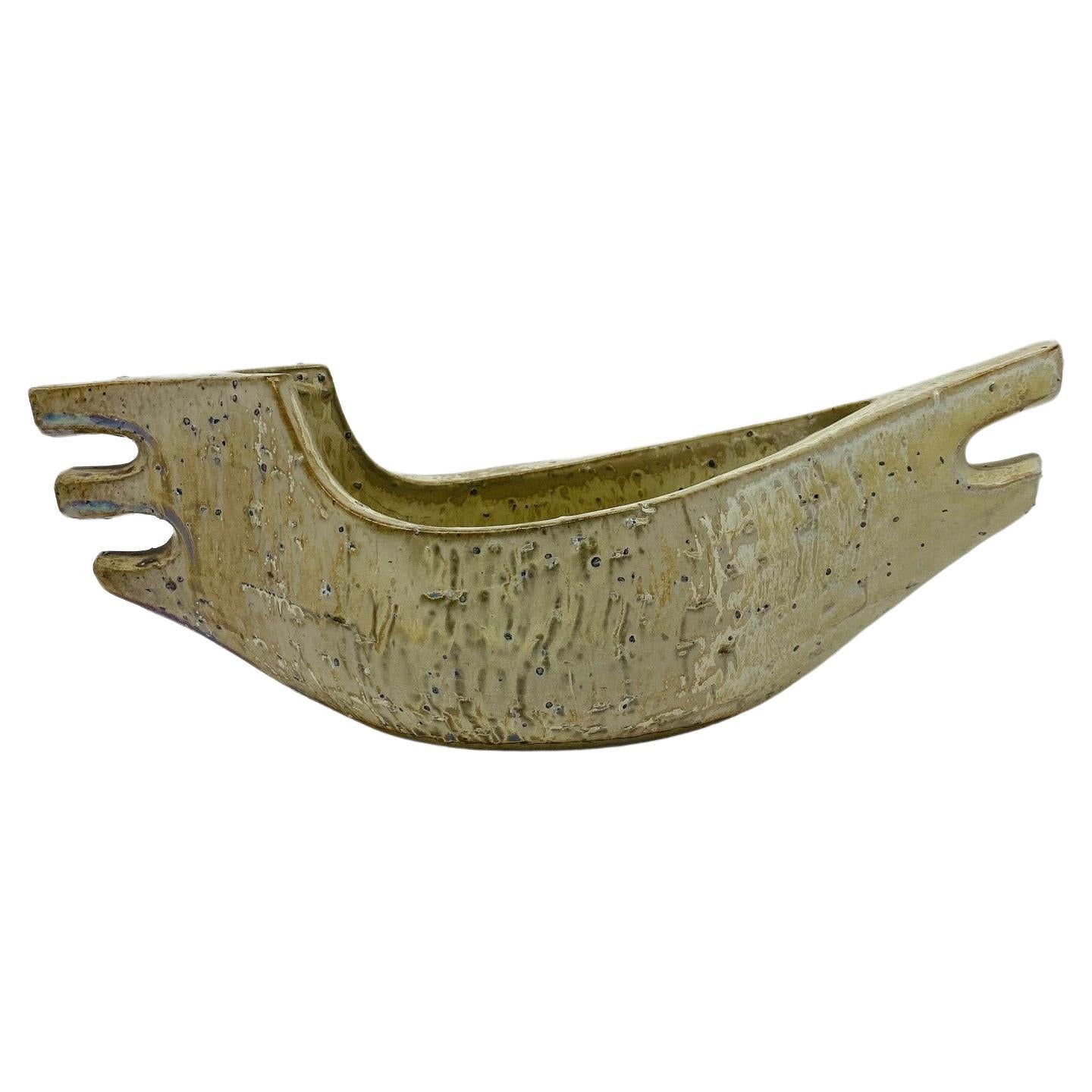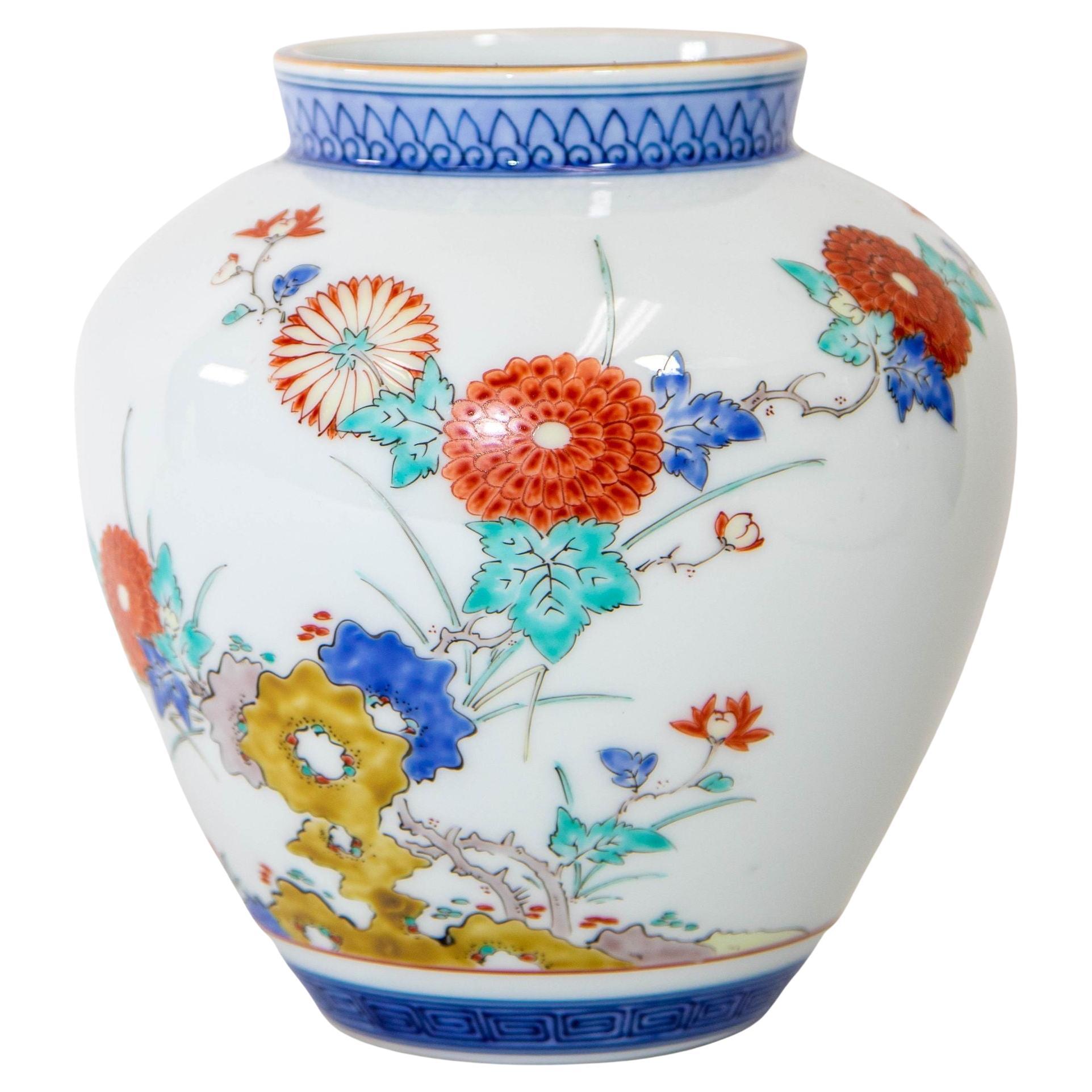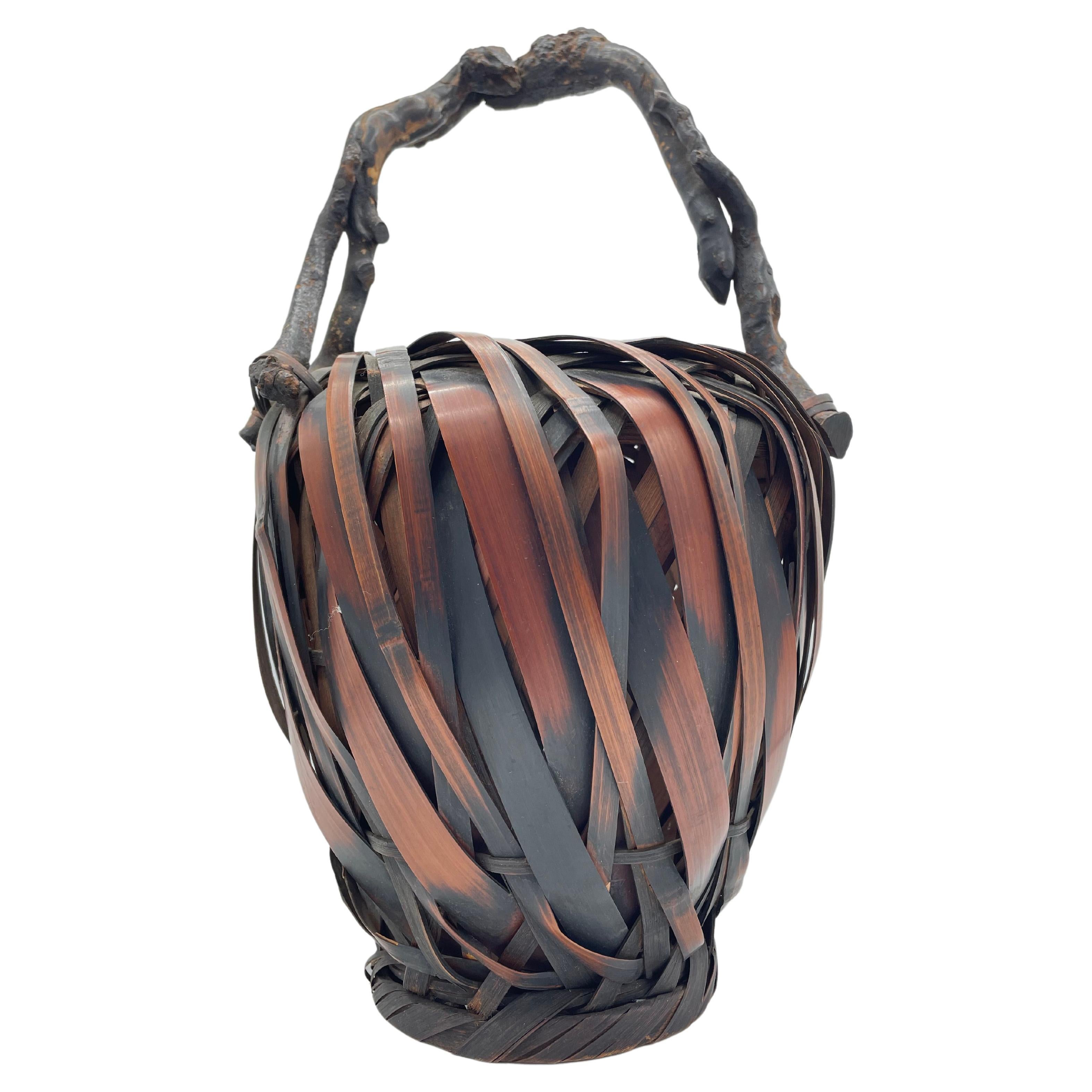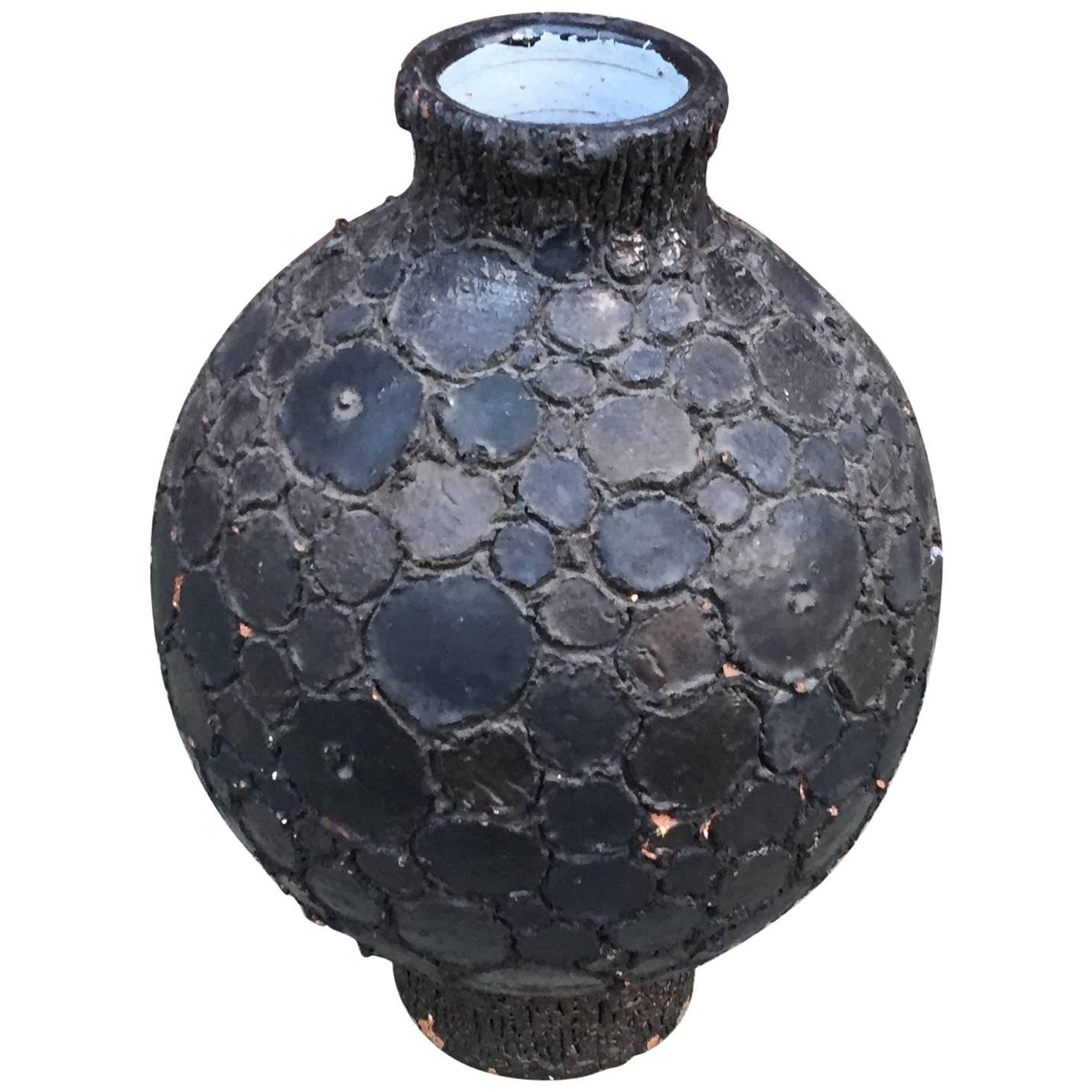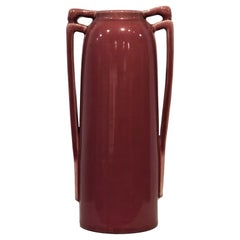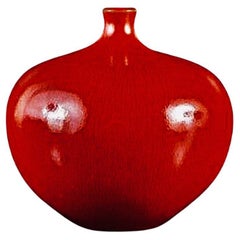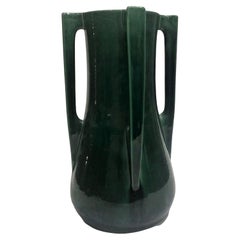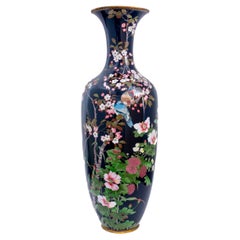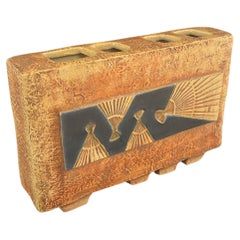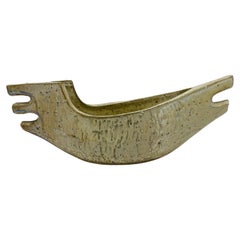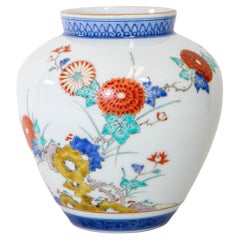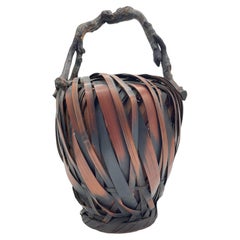Objekte ähnlich wie Japanese Modernist Beige Studio Ceramic Flower Vase, Circa 1950s
Möchten Sie mehr Bilder oder Videos?
Zusätzliche Bilder oder Videos von dem*der Anbieter*in anfordern
1 von 5
Japanese Modernist Beige Studio Ceramic Flower Vase, Circa 1950s
Angaben zum Objekt
Japanese Modernist Beige Studio Ceramic Flower Vase, Circa 1950s
DIMENSIONS:
Height: 11 inches
Diameter: 4 inches
ABOUT JAPANESE MODERNIST BEIGE STUDIO CERAMICS
Japanese Modernist Beige Studio Ceramics represent a harmonious blend of traditional craftsmanship and modernist aesthetics, characterized by minimalist forms, subdued beige tones, and a focus on materiality and form. These ceramics emerged prominently in the post-World War II era, reflecting a shift towards individual artistic expression and a departure from purely functional pottery.
ORIGINS & INFLUENCES
The evolution of Japanese modernist ceramics was significantly influenced by two major movements:
• Mingei Movement: Initiated in the 1920s by philosopher Yanagi Sōetsu and potters like Hamada Shōji and Kawai Kanjirō, the Mingei (folk craft) movement celebrated the beauty of everyday, utilitarian objects made by anonymous craftsmen. It emphasized simplicity, natural materials, and traditional techniques, laying the groundwork for modernist interpretations in ceramics. Daniella On Design+2Financial Times+2Saint Louis Art Museum+2
• Sōdeisha Group: Founded in 1948 by Yagi Kazuo, Kano Tetsuo, and others, Sōdeisha (Crawling through Mud Association) sought to break away from traditional functional pottery. They emphasized sculptural forms and abstract expression, often incorporating muted glazes and minimalist designs. Mirviss+2Ceramics Now+2Wikipedia+2
CHARACTERISTCS OF BEIGE MODERNIST CERAMICS
Beige tones in Japanese modernist ceramics are not merely aesthetic choices but reflect deeper philosophical and cultural values:
• Wabi-Sabi Aesthetics: The preference for subdued, earthy colors aligns with the Japanese concept of wabi-sabi, which finds beauty in imperfection, impermanence, and simplicity.
• Material Emphasis: Artisans often highlight the natural texture and color of the clay, using minimal glazing to allow the material's inherent qualities to shine.
• Functional Minimalism: While some pieces are purely sculptural, many maintain functionality, embodying a minimalist design that serves both aesthetic and practical purposes.
• NOTABLE ARTISTS & STUDIOS
• Yagi Kazuo: A leading figure in the Sōdeisha group, Yagi's work exemplifies the fusion of modernist abstraction with traditional ceramic techniques. His pieces often feature neutral tones and innovative forms. Leonard Joel Auctions+3Wikipedia+3Ceramics Now+3
• Shoji Hamada: A key proponent of the Mingei movement, Hamada's ceramics are celebrated for their rustic simplicity and natural glazes, often in earthy hues including beige. Financial Times+1Daniella On Design+1
• Ken Matsuzaki: A contemporary potter influenced by both Mingei and modernist principles, Matsuzaki's works often showcase natural glazes and forms that highlight the clay's texture.
COLLECTING & APPRECIATING
Japanese modernist beige ceramics are highly regarded in both art and design circles for their timeless appeal and philosophical depth. Collectors and enthusiasts can explore these works through various avenues:
Galleries and Auctions: Institutions like Leonard Joel Auctions have featured exhibitions focusing on modernist Japanese ceramics, showcasing pieces from the 1950s to the present.
Online Marketplaces: Platforms such as 1stDibs and others offer a range of vintage and contemporary Japanese ceramics, including beige-toned pieces that reflect modernist aesthetics.
Museum Collections: Museums worldwide, including the Museum of Modern Art (MoMA), have recognized and exhibited works by Japanese modernist ceramicists, underscoring their global significance.
In summary, Japanese Modernist Beige Studio Ceramics encapsulate a unique intersection of tradition and innovation, offering insights into Japan's cultural evolution and artistic sensibilities. Their understated elegance and philosophical underpinnings continue to inspire and captivate audiences around the world.
- Maße:Höhe: 27,94 cm (11 in)Durchmesser: 10,16 cm (4 in)
- Stil:Japonismus (Aus dem Zeitalter)
- Materialien und Methoden:
- Herkunftsort:
- Zeitalter:
- Herstellungsjahr:Circa 1950s
- Zustand:Abnutzung dem Alter und der Nutzung entsprechend. We make our best effort to provide a fair and descriptive condition report. Please examine photos attentively, as they are part of the description. Send us a message to request more details or discuss price.
- Anbieterstandort:New York, NY
- Referenznummer:1stDibs: LU2819345266942
Anbieterinformationen
5,0
Geprüfte*r Anbieter*in
Jede*r Anbieter*in erfüllt strenge Standards bezüglich Echtheit und Zuverlässigkeit
Gründungsjahr 1993
1stDibs-Anbieter*in seit 2017
80 Verkäufe auf 1stDibs
Typische Antwortzeit: 3 Stunde
- VersandAngebot wird abgerufen …Versand von: New York, NY
- Rückgabebedingungen
Einige Inhalte dieser Seite wurden automatisch übersetzt. Daher kann 1stDibs nicht die Richtigkeit der Übersetzungen garantieren. Englisch ist die Standardsprache dieser Website.
Authentizitätsgarantie
Im unwahrscheinlichen Fall eines Problems mit der Echtheit eines Objekts kontaktieren Sie uns bitte innerhalb von 1 Jahr für eine volle Rückerstattung. DetailsGeld-Zurück-Garantie
Wenn Ihr Objekt nicht der Beschreibung entspricht, beim Transport beschädigt wurde oder nicht ankommt, kontaktieren Sie uns bitte innerhalb von 7 Tagen für eine vollständige Rückerstattung. DetailsStornierung innerhalb von 24 Stunden
Sie können Ihren Kauf jederzeit innerhalb von 24 Stunden stornieren, ohne jegliche Gründe dafür angeben zu müssen.Geprüfte Anbieter*innen
Unsere Anbieter*innen unterliegen strengen Dienstleistungs- und Qualitätsstandards, wodurch wir die Seriosität unserer Angebote gewährleisten können.Preisgarantie
Wenn Sie feststellen, dass ein*e Anbieter*in dasselbe Objekt anderswo zu einem niedrigeren Preis anbietet, werden wir den Preis entsprechend anpassen.Zuverlässige weltweite Lieferung
Unsere erstklassigen Versandunternehmen bieten spezielle Versandoptionen weltweit, einschließlich individueller Lieferung.Mehr von diesem*dieser Anbieter*in
Alle anzeigenJapanische Jugendstil-Blumenvase aus Awaji Ware Art Studio Pottery, ca. 1900er Jahre
Japanischer Jugendstil
Blumenvase
Awaji Ware Art Studio Töpferei
ca. 1900s
ÜBER AWAJI WARE ART STUDIO TÖPFEREI
Awaji-Töpferwaren wurden zwischen 1830 und 1939 auf der gleichnamige...
Kategorie
Antik, Frühes 20. Jhdt., Japanisch, Art nouveau, Vasen
Materialien
Töpferwaren
Japanische Kaiser-Shōwa-Periode, rote Feinkeramik-Vase, signiert, ca. 1980
Japanische Kaiser-Shōwa-Periode, rote Feinkeramik-Vase, signiert, ca. 1980
Kaiser Shōwa Periode - von 1926 bis 1990
ÜBER
Diese exquisite Vase in der klassischen japanischen Form h...
Kategorie
Vintage, 1980er, Japanisch, Japonismus, Vasen
Materialien
Keramik
Japanische Blumenvase im Jugendstil, Awaji Ware Art Studio Pottery, ca. 1900
Von Awaji Pottery
ABMESSUNGEN:
Höhe: 12,5 Zoll
Breite: 6,75 Zoll
Tiefe: 6,75 Zoll
ÜBER AWAJI TÖPFEREI
Awaji-Töpferwaren wurden zwischen 1830 und 1939 auf der gleichnamigen japanischen Insel ...
Kategorie
Antik, Frühes 20. Jhdt., Japanisch, Art nouveau, Vasen
Materialien
Keramik
Große japanische Cloisonné-Vase, ca. 1900/1910
Große japanische Cloisonné-Vase in Mitternachtsblau mit Blumen und Vögeln, ca. 1900/1910
Späte Meiji-Zeit (1868-1912)-frühe Taisho-Zeit (1912-1926)
Abmessungen: 46" hoch x 51,5" Durc...
Kategorie
Antik, Frühes 20. Jhdt., Japanisch, Japonismus, Vasen
Materialien
Metall
Antike japanische Ikebana-Vase aus Wurzelholz und Bambus, XIX. Jahrhundert
Atique
Wurzelholz & Bambus
Ikebana Vase
Japan, XIX. Jahrhundert
ABMESSUNGEN
Höhe: 19,25Zoll
Breite: 10,13 Zoll
Tiefe: 9,5 Zoll
ÜBER
Diese absolut einzigartige Ikebana-Vase besteht ...
Kategorie
Antik, Spätes 19. Jahrhundert, Japanisch, Japonismus, Blumenkästen, Blum...
Materialien
Bambus, Holz
Japanische Kaiser Shōwa Periode Kiyomizu-Ware Vase, 18. Jahrhundert
Japanische Kaiser Shōwa Periode Kiyomizu-Ware Vase, 18. Jahrhundert
Kaiser Shōwa Periode - von 1926 bis 1989/1990
ABMESSUNGEN
Höhe: 9 Zoll
Dur...
Kategorie
Antik, 1770er, Japanisch, Japonismus, Vasen
Materialien
Keramik
Das könnte Ihnen auch gefallen
Modernistische Ikebana-Vase aus der Jahrhundertmitte, Japan 1950er Jahre
Modernist Ikebana Vase mit mehreren Öffnungen und eine strukturierte Oberfläche. schöne Farben auf der Seite unterzeichnet.
Kategorie
Vintage, 1950er, Japanisch, Moderne der Mitte des Jahrhunderts, Vasen
Materialien
Ton
Modernistische Ikebana-Vase aus der Jahrhundertmitte, Japan 1950er Jahre
Modernistische Ikebana-Vase mit einer Gefäßstruktur und strukturierter Oberfläche. Unbekannte Signatur im Boden. Japan, 1950er Jahre.
Mid-Century, Hollywood Regency, Art Deco, Ekle...
Kategorie
Vintage, 1950er, Japanisch, Moderne der Mitte des Jahrhunderts, Vasen
Materialien
Ton
Signierte japanische Arita Kakiemon-Vase mit Blumenmuster, 1950er Jahre
Von Arita, Sakaida Kakiemon Xii
Signierte japanische Kakiemon Arita Imari Vase mit Blumen aus der Mitte des Jahrhunderts. Signierte japanische Kakiemon Vase von Sakaida Kakiemon XIII (1906-1982). Ein schönes Exempl...
Kategorie
Mitte des 20. Jahrhunderts, Japanisch, Japonismus, Vasen
Materialien
Porzellan
Antike japanische Blumenvase aus Bambus, 1950er-Jahre
Dies ist eine antike Blumenvase, die mit Bambus und Holz in Japan hergestellt wurde.
Diese Blumenvase wurde in den 1950er Jahren hergestellt.
Der Teil des Handgelenks ist aus Holz ...
Kategorie
Vintage, 1950er, Japanisch, Vasen
Materialien
Bambus, Holz
Die japanisch-inspirierte Keramikvase vonignem, nicht signiert, um 1950
Perignem, japanisch inspirierte Keramikvase, nicht signiert, um 1950
Kategorie
Vintage, 1950er, Belgisch, Japonismus, Vasen
Materialien
Keramik
Keramikvase, Italien, ca. 1950er Jahre
Von Giovanni de Simone
Schöne handbemalte Keramikvase aus der Jahrhundertmitte.
Italien, ca. 1950er Jahre.
Kategorie
Vintage, 1950er, Italienisch, Moderne der Mitte des Jahrhunderts, Tonwaren
Materialien
Keramik
160 $ Angebotspreis
20 % Rabatt
